Corelli’s Christmas Concerto


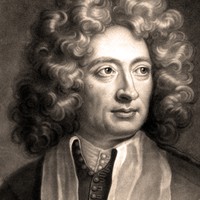
(Duration: 13 min)
Arcangelo Corelli came of age at the ideal time and place for an aspiring violinist, when composer-performers in Italy were reinventing the instrument’s technique and repertoire, spurred on by access to the finest fiddles ever made (thanks to Amati, Stradivari and company). After Corelli moved from Bologna to Rome in his early twenties, he established himself as the most influential violinist and teacher of his generation, attracting students and imitators from all over Europe.
All of Corelli’s published compositions — just six collections in total — featured his own instrument. He wrote many sonatas for violin and basso continuo (a shared bass line usually played by cello along with harpsichord or other accompanying instruments), and he also composed for two violins and basso continuo, a genre known as the trio sonata. His most widely copied innovation was the concerto grosso, which added full string sections to the texture of the trio sonata, allowing for alternations between the rich ensemble sound and the more transparent and virtuosic possibilities of solo violins and cello. Musicians had been propagating that new style for decades by the time Corelli’s concertos first appeared in print, in a posthumous publication released in 1714 as his Opus 6, and the craze only accelerated from there.
On the manuscript of the Concerto Grosso in G Minor that was eventually published as the eighth of the twelve concertos in Opus 6, Corelli indicated that it was “written for Christmas night.” Cross-checking the historical record, we can presume that this was the concerto he wrote in 1690 when one of his patrons, a Cardinal in Rome, commissioned a Christmas concerto. At the time, dance music was prohibited in churches (even outside of official services), so Corelli wrote it in the acceptable “church” style, using abstract tempos and rhythmic patterns instead of the recognizable dances that had been popularized in France. This concerto exhibits more variety than the typical slow-fast-slow-fast array of movements, saving its biggest surprise for the Christmas-themed finale, an optional Pastorale that evokes the rural setting of Jesus’ birth with droning, lilting shepherd music.
Aaron Grad ©2023
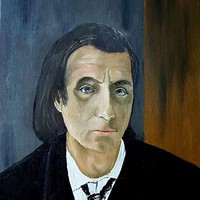
(Duration: 23 min)
The Russian composer Alfred Schnittke received his earliest musical training in Vienna, while his father served there as a translator. After graduating from the Moscow Conservatory in 1958, he made waves with the explosive oratorio Nagasaki, and despite receiving an official rebuke from the government-aligned Union of Composers, he managed to sustain a career by scoring state-sponsored films and teaching. In his original music, he navigated the constraints on Soviet composers by honing a “polystylistic” sound that borrowed freely from music of just about any style and era, from the holiest church music to the bawdiest songs.
Schnittke’s idiosyncratic relationship to music of the past drives his Suite in the Old Style, originally composed for violin and piano in 1972, and heard here in a version for chamber orchestra arranged in 1991 by Vladimir Spivakov and Vladimir Milman. With artful phrases and sparkling harmonies, long passages saunter by without disturbing the fantasy that this is some forgotten score from the eighteenth century. But then we reach a juncture like the trills at the end of the opening Pastorale that drift off key, or the sour passing notes that add subtle complexity to the sweetness of the Ballet. The final Pantomime stretches this Baroque cosplay just far enough past the line of believability to ensure that everyone is in on the joke together, ending with a new version of the first movement’s bizarrely inconclusive final cadence.
Aaron Grad ©2023
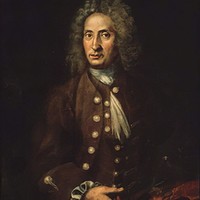
(Duration: 7 min)
Among the Italians who influenced the generation of Georg Philipp Telemann, George Frideric Handel and Johann Sebastian Bach, Giuseppe Torelli was a key figure who is underappreciated today. At the same time that Arcangelo Corelli was advancing sonatas and concertos in Rome, Torelli made his own progress with those genres in the northern city of Bologna. And whereas Corelli’s music only circulated in copied manuscripts and published scores, Torelli himself brought Italian style north during the years he spent in Berlin and Vienna in the late 1690s.
In Bologna, Torelli wrote music for the cavernous San Petronio Cathedral, which had bulked up its musical forces to project sound throughout the nave, including the addition of a superb trumpet player. Torelli ended up composing a large body of music to feature the trumpet, including this Trumpet Concerto in D Major. In that period before trumpets had valves to access all the chromatic pitches, players were limited to the natural overtones that could be created from air blowing through a tube of a given length. The lower overtones are more distant from each other, leading to bugle-like leaps in the instrument’s lower range; to play melodies that moved in steps and scales, trumpeters had to climb into the bright upper range where the overtones are closer together. That brilliance is on display in the fast outer movements, while the middle movement gives the trumpet soloist a rest and entrusts the strings with the slow, pulsing counterpoint (plus a surprising pivot to a fast episode).
Aaron Grad ©2023
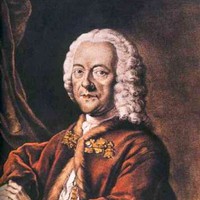
(Duration: 10 min)
Georg Philipp Telemann was the most respected German composer during his lifetime, influencing and overshadowing his slightly younger colleague, Johann Sebastian Bach. During Telemann’s years as a law student in Leipzig, he founded the Collegium Musicum that Bach eventually directed, and that hands-on practice with instrumental forms helped Telemann secure one of his first jobs with a duke in Eisenach. He was able to continue developing his instrumental music during his time in Frankfurt from 1712 to 1721, including this concerto featuring two flutes and bassoons. From there, he progressed to what was arguably the most prestigious post in all of Germany, directing music for the principal churches of Hamburg from 1721 until his death 46 years later.
The Concerto in G Major for Two Flutes and Bassoons shows how Telemann was integrating the best international styles into a new musical language. The four-movement structure resembles Corelli’s church sonatas and concertos, although Telemann’s opening movement defies the expectation of slow music when the accompanying strings and basso continuo cling to their own faster rhythmic emphasis, contradicting the mellow counterpoint of the self-contained woodwind soloists in alternating sections. The divisions are even more stark in the third movement, in which the strings only contribute to the closing cadence at the end of each section. The finale uses drones and exuberant scale patterns to impart a fiddling, folk-like atmosphere.
Aaron Grad ©2023
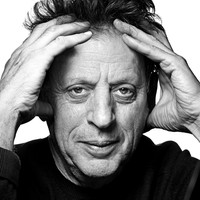
(Duration: 7 min)
Although he prefers the term “music with repetitive structures,” Philip Glass is one of the founding fathers of the compositional style known more widely as minimalism. In his early career, he worked outside of the musical establishment, leading the amplified Philip Glass Ensemble while earning a living driving a taxi among other odd jobs. His breakthrough opera Einstein on the Beach (1976) led to new opportunities in theater and film, but it was not until 1987, at the age of 50, that he was finally invited to write music for symphony orchestras, marking his long overdue recognition as a leader among American composers.
The Israeli American violinist Edna Michell explained the origins of the Compassion Project that led to the commission of Glass’ Echorus, in collaboration with one of the great elder statesmen of the violin, Yehudi Menuhin. “In 1993,” Michell wrote, “following recording sessions in the Czech Republic, Yehudi Menuhin and I were on the way to Vienna to catch flights to different destinations. Menuhin was despairing about the atrocities of the world. To change the mood, I came up with the idea of composers from around the world writing short works inspired by the theme of compassion. It struck a chord with Menuhin, and he remained immersed in the project for the rest of his life.”
Glass derived the title from the word “echo,” and he fashioned the score in the form of a chaconne, that Baroque tradition of continuous variations played over a repeating pattern. As he wrote in a program note, “The soloists either play the chaconne or melodic parts suggested by the harmonic structure. The music is inspired by thoughts of compassion and is meant to evoke feelings of serenity and peace.”
Aaron Grad ©2023
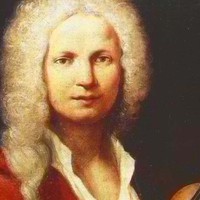
(Duration: 9 min)
With a cushy job in his native Venice teaching violin at a well-endowed school for orphaned girls (many of whom were really the illegitimate offspring of aristocrats), Antonio Vivaldi was able to use his talented students to test out his compositions, especially his hundreds of concertos. He published twelve of those concertos as his Opus 3, first printed in Amsterdam in 1711 under title L’estro armónico (The Harmonic Inspiration). Taking advantage of the school’s ample supply of competent players, Vivaldi wrote concertos to feature up to four solo violinists.
In the Concerto No. 10 in B Minor for Four Violins, the soloists appear in a range of inventive configurations, starting with a surprising first phrase that uses just two violins and a viola. The middle movement is particularly enigmatic, from its unstable first chord, through its ghostly Larghetto section built from intricate bowing patterns, to its unresolved ending that links to the finale. Only in this closing movement do the four soloists come together for virtuosic passages of call-and-response sparring.
Aaron Grad ©2023
Get driving directions and find nearby parking.
Find dining options close to the venue.
View seating charts to find out where you'll be seating.
Get driving directions and find nearby parking.
Find dining options close to the venue.
View seating charts to find out where you'll be seating.
